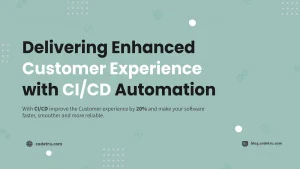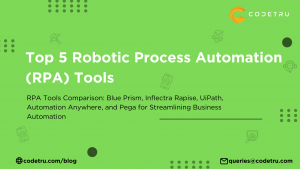DevSecOps automation has become essential to counter these modern security challenges. Imagine scrolling through social media only to see your face plastered across the internet, alongside millions of others, in a massive data breach. Or picture receiving a ransom demand after cybercriminals infiltrate your company’s network, holding your critical data hostage. These are not fictional scenarios; they are harsh realities in today’s hyper-connected world, a grim reminder of the ever-evolving cyber threats we face.
One recent example highlighting the critical need for robust security practices is the Wendy’s POS malware breach. In late 2023, hackers injected malicious software into the point-of-sale systems of over 300 Wendy’s locations across the US. This breach exposed countless customers’ payment information, including credit card numbers and expiration dates.
These breaches expose a fundamental truth: traditional security approaches are no longer enough. In today’s complex software landscape, manual processes, and siloed teams simply cannot keep pace with the sophistication and relentless nature of cyber threats.
DevSecOps Overview
DevSecOps is a revolutionary approach that integrates security throughout the entire software development lifecycle, from the initial planning stages to deployment and ongoing maintenance. It aims to reduce the risk of releasing code with security vulnerabilities, improve collaboration between development, security, and operations teams, and accelerate the delivery of secure software.
By automating security tasks and fostering collaboration between developers, security professionals, and operations teams, DevSecOps organizations can build more secure software faster and more reliably. DevSecOps automation tools play a pivotal role in achieving this efficiency by streamlining processes and enhancing security across the pipeline.
One of the key enablers of DevSecOps is automation. Automation is the practice of using tools, technologies, and frameworks to automate tasks that would otherwise require manual intervention, such as security testing, configuration management, infrastructure provisioning, and incident response. Automation helps DevOps teams achieve speed, efficiency, consistency, and scalability while ensuring security and compliance throughout the development process.
In this blog post, we will explore the importance of DevSecOps Automation, the key aspects of automation in DevSecOps, the main areas where automation is used in DevSecOps, and the future trends and technologies that will shape automation in DevSecOps.
Why is Automation Important in DevSecOps?
Automation plays a crucial role in the devSecOps lifecycle. It’s the collaborative approach that integrates security throughout the software development lifecycle. To run an organization, you need a coordinated network of systems working together. That’s what automation does for DevSecOps.
Importance of DevSecOps
1. Accelerate Development and Deployment
Automation enables faster software delivery by automating repetitive and error-prone tasks, such as code integration, testing, and deployment. Tools that support DevSecOps automation ensure teams can work efficiently without compromising security.
2. Improve Verification Checks
Automation allows teams to perform security checks and tests at every stage of the software development lifecycle, from code analysis to vulnerability scanning to penetration testing. It also enables continuous security, which is the practice of integrating security into CI/CD pipelines and providing real-time feedback and remediation. Automation can help teams identify and fix security issues early on when they are easier and cheaper to resolve, rather than waiting until the end or after the software is released.
3. Maintain Security Uniformity
Automation allows teams to enforce security standards and policies across the software development lifecycle, by automating security controls, compliance checks, and audits
4. Enable Self-Service Functions
With Automation, teams can now perform security tasks without depending on external resources using the self-service tools.
5. Potential for Cost Savings
Automation allows teams to optimize their resources and reduce their costs, by eliminating manual labor, reducing human errors, increasing productivity, and enhancing quality.
How does Automation Empower DevSecOps?
Automation empowers DevSecOps by providing the following benefits:
1. Boosts Speed and Efficiency
DevSecOps Automation enables teams to deliver software faster and more frequently, by reducing the time and effort required for security tasks. It also reduces the complexity and variability of security tasks, by simplifying and standardizing them.
2. Enhances Security
DevSecops Automation enables teams to deliver software more securely, by increasing the coverage and depth of security testing. It also improves the accuracy and reliability of security testing, by minimizing human errors and biases.
3. Improves Collaboration
With DevSecops automation, teams can deliver software more collaboratively, by facilitating communication and coordination between development, security, and operations teams. It fosters a culture of transparency and trust, by providing visibility and accountability for security tasks. Automation helps teams to break down silos and barriers and to work together as a unified DevOps team.
4. Increases Scalability
With DevSecops automation, you can deliver software more scalably, by allowing them to handle larger and more complex workloads, and to adapt to the changing requirements of the production environments.
5. Provides Continuous Feedback
DevSecops Automation enables teams to deliver software more effectively, by providing continuous and actionable feedback on the quality and security of the software.
What are the Key Areas where Automation is used in DevSecOps?
Automation helps out in various areas to strengthen your software’s security posture. such as:
1. Security Testing
DevSecops Automation enables teams to perform security testing at every stage of the software development lifecycle (SDLC), from code analysis to vulnerability scanning to penetration testing. Automation also enables teams to integrate security testing tools and frameworks into their CI/CD pipelines, and to provide real-time feedback and remediation. Some examples of security testing tools and frameworks are:
2. Static Application Security Testing (SAST)
SAST is the process of analyzing the source code or binaries of the software, to detect security flaws and vulnerabilities. These tools can be integrated into the code editors, version control systems, or DevOps pipelines, and can provide feedback and recommendations to the developers. Some examples of SAST tools are SonarQube, Veracode, and Checkmarx.
3. Dynamic Application Security Testing (DAST)
DAST is the process of testing the software in a running state, to simulate attacks and identify security weaknesses and vulnerabilities. These tools, supported by DevSecOps automation, integrate into DevOps pipelines and provide feedback and reports to developers and security teams.
4. Interactive Application Security Testing (IAST)
IAST combines SAST and DAST techniques to analyze software from both internal and external perspectives, delivering more accurate and comprehensive results. Using DevSecOps automation, these tools integrate into DevOps pipelines and provide real-time feedback and alerts to developers and security teams.
5. Software Composition Analysis (SCA)
SCA analyzes software components and dependencies to identify and manage security and compliance risks in open-source and third-party software. With DevSecOps automation, SCA tools integrate into CI/CD pipelines, offering feedback and recommendations to developers and security teams. Examples include Black Duck, WhiteSource, and Snyk.
6. Configuration Management
Configuration management is the process of defining and maintaining the configuration of the software and the infrastructure, by ensuring consistency, accuracy, and compliance. DevSevops Automation enables teams to automate the configuration of the software and the infrastructure, by using code and scripts to specify the desired state and behavior. It also enables teams to automate the enforcement of the configuration, by using tools and frameworks to monitor and audit the actual state and behavior.
7. Infrastructure Provisioning
Infrastructure provisioning is the process of creating and managing the infrastructure resources, such as servers, networks, storage, and databases, that are required to run the software. DevSecops Automation enables teams to automate the provisioning of the infrastructure resources, by using code and templates to specify the desired configuration and parameters. It also helps teams to automate the scaling and updating of the infrastructure resources, by using tools and frameworks to monitor and adjust the demand and capacity.
The Future of Automation in DevSecOps
DevSecOps Automation is not a static or fixed concept, but rather a dynamic and evolving one. As the software development and security landscape changes, so does the need and opportunity for automation. Here are some of the emerging trends and technologies that will shape the future of automation in DevSecOps:
1. Artificial Intelligence (AI) and Machine Learning (ML)
AI and ML are technologies that enable systems to learn from data and perform tasks that normally require human intelligence, such as reasoning, decision-making, and problem-solving. Artificial Intelligence and Machine Learning can enhance automation in DevSecOps by providing more accurate and efficient security testing, analysis, and remediation. AI and ML can also help automate security tasks that are currently difficult or impossible to automate, such as threat hunting, anomaly detection, and risk assessment.
2. Serverless and Microservices Architectures
Serverless and microservices architectures are software design patterns that enable applications to be composed of small, independent, and loosely coupled services that run on demand and scale automatically. Serverless and microservices architectures can enable automation in DevSecOps by providing more granular and modular security controls, testing, and monitoring. Serverless and microservices architectures can also help reduce the attack surface and complexity of applications, and improve the resilience and availability of applications.
3. Zero Trust and Identity and Access Management (IAM)
Zero trust and IAM are security principles and practices that assume that no entity, whether internal or external, can be trusted by default, and that every request for access or resource must be verified and authorized. It can enable DevSecOps Automation by providing more robust and consistent security policies, rules, and enforcement. It also helps prevent unauthorized access and data leakage and improves the visibility and auditability of security events.
Conclusion
Automation is a key enabler of DevSecOps, as it helps integrate security into every phase of the software development lifecycle, from initial design to deployment and delivery process. It helps DevOps teams achieve speed, efficiency, consistency, and scalability while ensuring security and compliance throughout the development process. Automation is used in various areas of the DevSecOps lifecycle, such as security testing, configuration management, infrastructure provisioning, and incident response. It is not a one-time or one-size-fits-all solution, but rather a continuous and adaptive journey that requires collaboration, innovation, and learning.
We are proud to be listed among the top DevOps companies on TopDevelopers.co. Our commitment to delivering robust DevOps solutions continues to drive excellence and innovation for our clients.”
FAQs on DevSecOps Automation
1. What is DevSecOps and how does automation play a role?
DevSecOps Integrates security at every stage of the software development lifecycle (SDLC), from design to deployment. Automation is important in DevSecOps because it streamlines security tasks, such as code analysis, vulnerability scanning, and incident response. By automating these processes, teams can accelerate development, improve security, and ensure continued compliance throughout the software lifecycle.
2. How does automation speed up and deploy software?
Automation in DevSecOps increases the speed and efficiency of software development by automating common tasks such as code integration, testing, and deployment. This enables continuous integration and continuous delivery (CI/CD), which are core DevOps practices. Automation reduces manual effort and errors, resulting in faster and more reliable software releases.
3. What are the key areas of automation in DevSecOps?
Automation is used in many key areas of DevSecOps, including:
Security Testing: Performs functions such as Static Application Security Testing (SAST), Dynamic Application Security Testing (DAST), and Software Composition Analysis (SCA) to identify vulnerabilities throughout the SDLC
Maintenance Control: Ensures consistent and accurate scheduling by operating tools.
Infrastructure provisioning: Automates infrastructure and infrastructure deployment, increasing scalability and efficiency.
4. How does automation improve security in DevSecOps?
Automation enhances security in DevSecOps by increasing security testing coverage and depth, reducing human error, and providing real-time feedback. Automated tools for continuous security changes in the CI/CD pipeline are identifiable, enabling teams to quickly identify and address vulnerabilities before they become critical issues
5. What future developments in automation will affect DevSecOps?
Artificial Intelligence (AI) and Machine Learning (ML): They enhance automation with improved threat detection and anomaly detection.
Serverless and microservice systems: facilitate modular and scalable security management.
Zero Trust and Identity and Access Management (IAM): Strengthening security by enforcing strict access and authentication mechanisms.
These advancements will continue to evolve, leading to more sophisticated and efficient automation solutions in DevSecOps.







